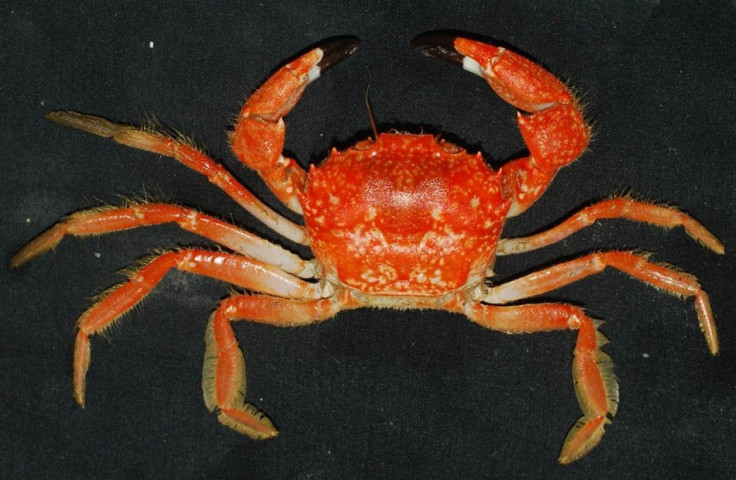Can Crabs Feel Pain? Science Says They Can [BLOG]
Fishermen and seafood lovers justify their appetites by saying their prey is insentient

My brother is a keen fisherman and not the nice kind who does it for fun or relaxation and throws the fish back in the river again when he has finished.
He brings them home, guts them and sticks them in a frying pan, which has led to a few discussions between us about the cruelty of dragging a living thing out of its natural environment and then bashing its head against the side of the boat until it is dead.
He patiently explains to me that fish don't feel pain, that they don't have the necessary parts of the brain to process it to which I reply if they don't, then they do a pretty good impression of something in pain as they contort and frantically flip around in the bottom of the boat.
The same argument has been made of crabs and lobsters which are dropped alive into a pot of boiling water before putting in an appearance on a dinner plate. Apparently, the scream I heard coming from the pot in my grandad's kitchen when I was a kid was the air escaping from the shell, not a scream because crabs don't feel pain and it wasn't frantically rattling around trying to get out, it was just the movement of the boiling water.
I have never bought my brother's explanation about fish or my grandad's on crabs and science may be proving that I was right to because a study by the Queen's University Belfast may have solved the question. Crabs do indeed feel pain.
In the experiment, 90 crabs were placed in a brightly lit area and were given the option of scuttling to one of two dark shelters. Once they'd made their choice, the crabs in one of the shelters were given an electric shock. The crabs were then returned to the lit area and allowed to scuttle off again and once again, an electric shock was given to the crabs in the same dark area as before.
When they were placed back into the lit area for a third time, the majority of the shocked crabs instead went to the alternative dark shelter, avoiding the one where they had received the shocks.
The professor in charge of the experiment concluded: "Having experienced two rounds of shocks, the crabs learned to avoid the shelter where they received the shock. They were willing to give up their hideaway in order to avoid the source of their probable pain."
Not being able to ask the crustaceans if that was actually the reason, because they realised if they went one way it hurt so they went the other way instead, we cannot be certain but it sounds more plausible then them not possessing the necessary bit of brain that detects pain.
Of course, another explanation could be that they worked out that both times they ran to the dark place on the left, a massive hand would come down and put them back into the brightly lit part so they ran to the alternative dark area instead. But until Queen's University straps some more electrodes to a bunch of crabs and let them run free we won't know. Until then I will be secretly hoping that all the crabs and lobsters that get dropped into boiling water get to have one last nip at the chef's fingers on their final trip into the pot.
Lucy P writes commentary on news, politics and media on her blog Falling on a Bruise
© Copyright IBTimes 2025. All rights reserved.





















